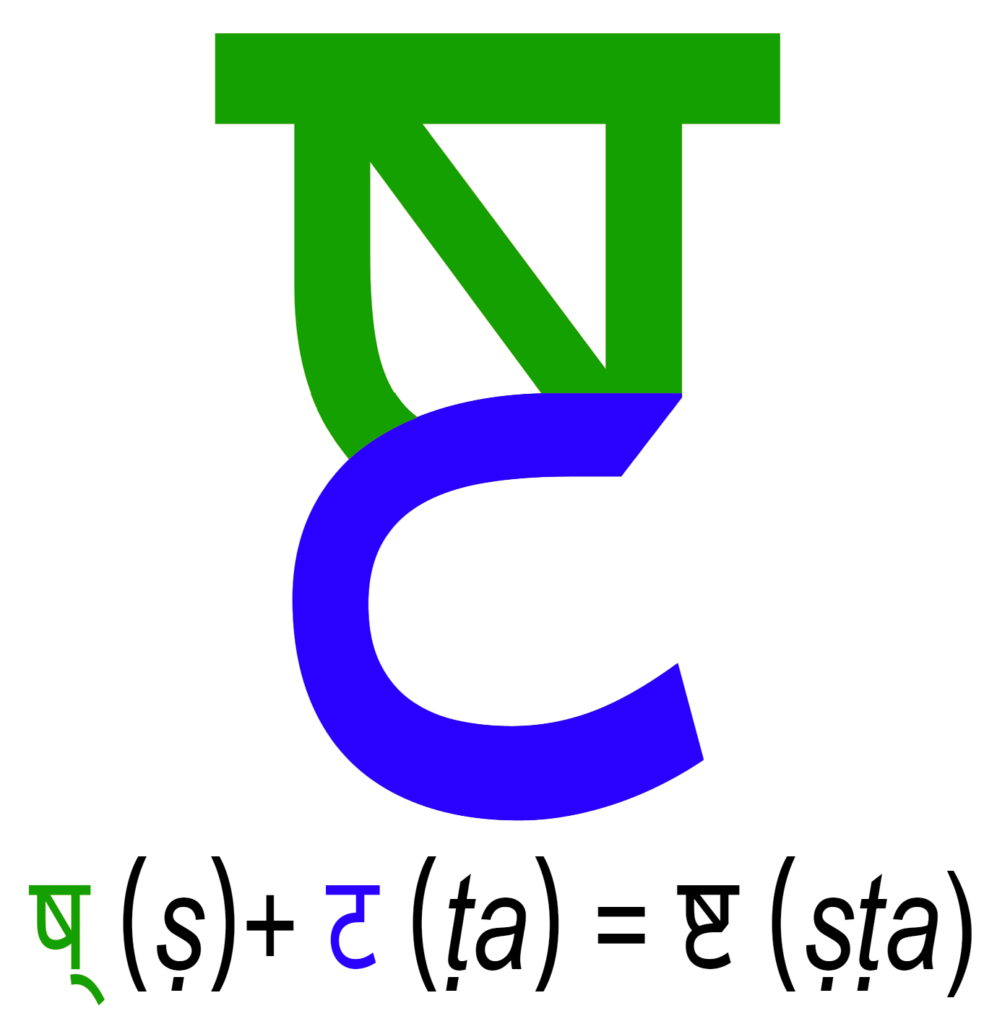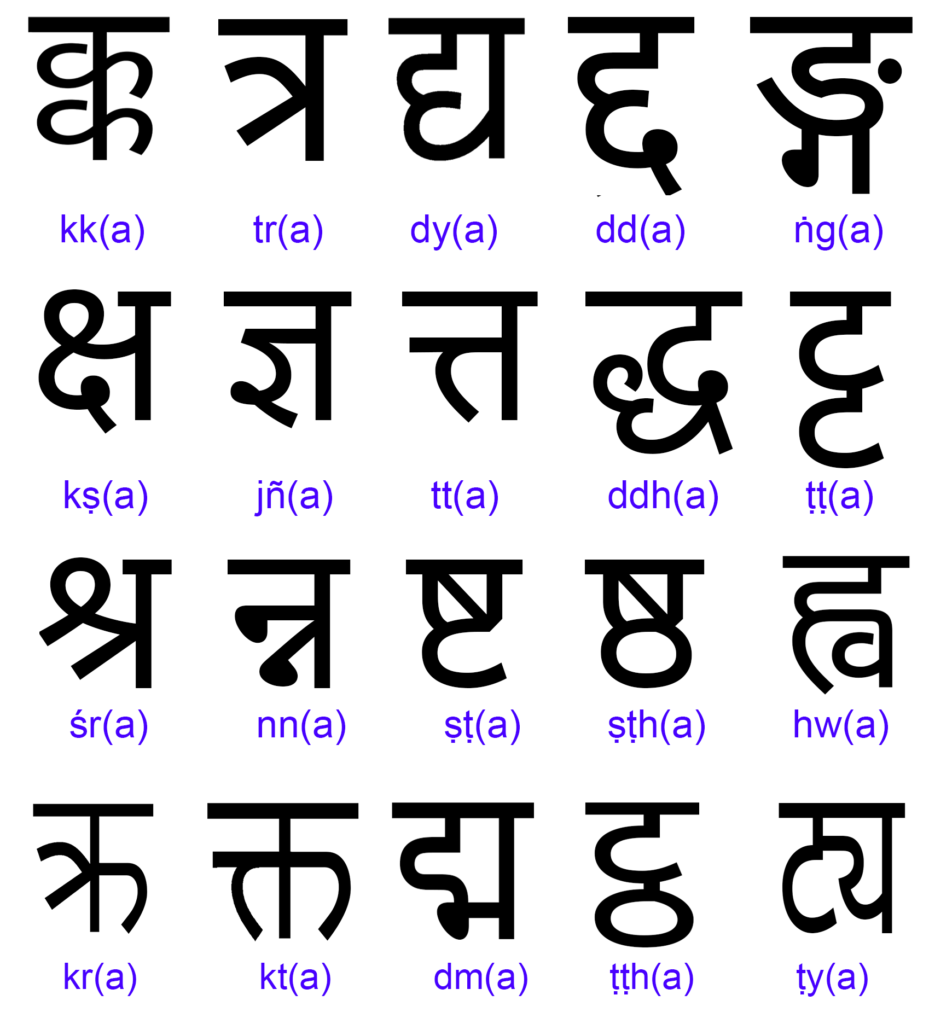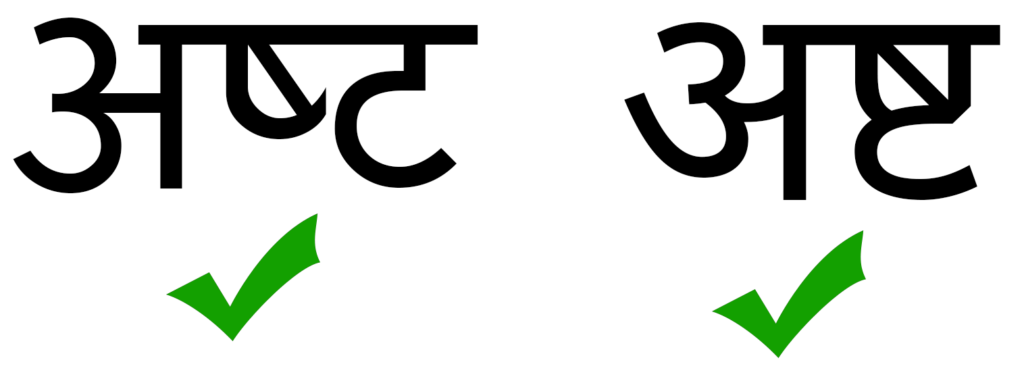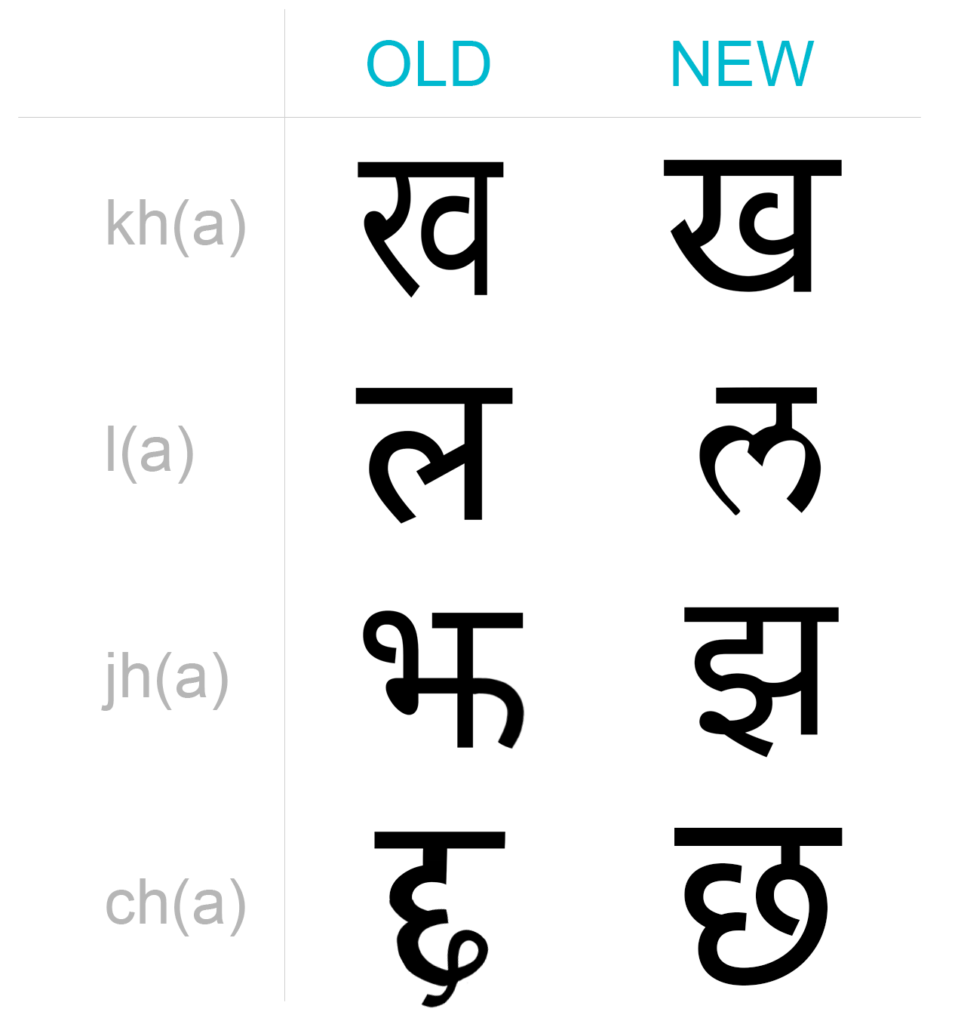INTRODUCTION
Consonant clusters appear frequently throughout text, with some clusters appearing more often than others. In order to increase writing speed and condense some frequently used clusters, special glyphs were created to represent these clusters. Thus, special characters are ligatures or glyphs that represent frequently occurring consonant clusters. Take the cluster ‘tr’, which has a special character as you can see below:
त् (t) + र् (r) + अ (a) = त्र (tra)
The character ‘त्र’ (tra) is a ligature that represents the cluster ‘tr‘. Not all clusters can be represented with a ligature, but all ligatures can be still be normally expressed as a combination of the consisting consonants.
There are also some characters that can be written in different ways in Devanagari. These variations can often be seen when one has a different font, or in handwriting, for example.
Note | Some characters may not render correctly on your device.
LIGATION
Ligatures are often created by taking parts of the consonants that constitute it, and then joining them together in some way. Thus, the ligation (or joining) of characters produces ligatures that we want in Devanagari. The preceding consonant is usually given the top or the front space of the ligature, while the succeeding consonant is given the bottom or the back space of the ligature. Observe how the following ligature ष्ट (ṣṭa) is made (colour-coded to highlight the backbone):
Of course, this process does not work for every consonant cluster, but when you do encounter such types of ligatures, guessing how to pronounce the character is relatively easy. There are also ligatures that do not resemble their parent consonants in an obvious manner, which we will be exploring in the chart below, along with some commonly occurring straightforward ligatures as well.
SPECIAL LIGATURES CHART
Remember that you may wish to not use the special ligature altogether and favour the more systematic way. Both versions are correct and readable.
Note | क्ष (kṣa) and ज्ञ (jña) are pronounced like छ्य (chya) and ग्य (gya) respectively.
SYNOGLYPHS AND VARIATIONS
Over time, some characters have been modified in order to reduce ambiguity or to update the style. However, you may encounter these forms sometimes, especially in writing. Thus, it is important to learn these variations as well. When two glyphs that look different have the same value and pronunciation, they’re known as synoglyphs.
There are also other variations that are important to consider. A common one is the omission of loops (or only partially looped) in some looped characters like ग (ga), भ (bha). This results in a more sharper look to the character. However, they are still the same character. An example is given below for भ (bha):

In the end, which version you choose is a matter of preference. I personally omit the loops but many people do not. As long as it is legible, it shouldn’t pose any problem.
Finally, some people do not draw the horizontal line above the characters. This is mostly a form of fast writing, and you should generally try to draw the horizontal line.
EXERCISES
A. IDENTIFY THE FOLLOWING CHARACTERS
1. द्म
2. त्र
3. द्य
4. क्ष
5. त्त
B. WRITE THE LIGATURE FORMS FOR THE FOLLOWING
1. ddh(a)
2. śr(a)
3. hy(a)
4. jñ(a)
5. ddo
ANSWERS
A.1. dm(a)
A.2. tr(a)
A.3. dy(a)
A.4. kṣ(a)
A.5. tt(a)
B.1. द्ध
B.2. श्र
B.3. ह्य
B.4. ज्ञ
B.5. द्दो



